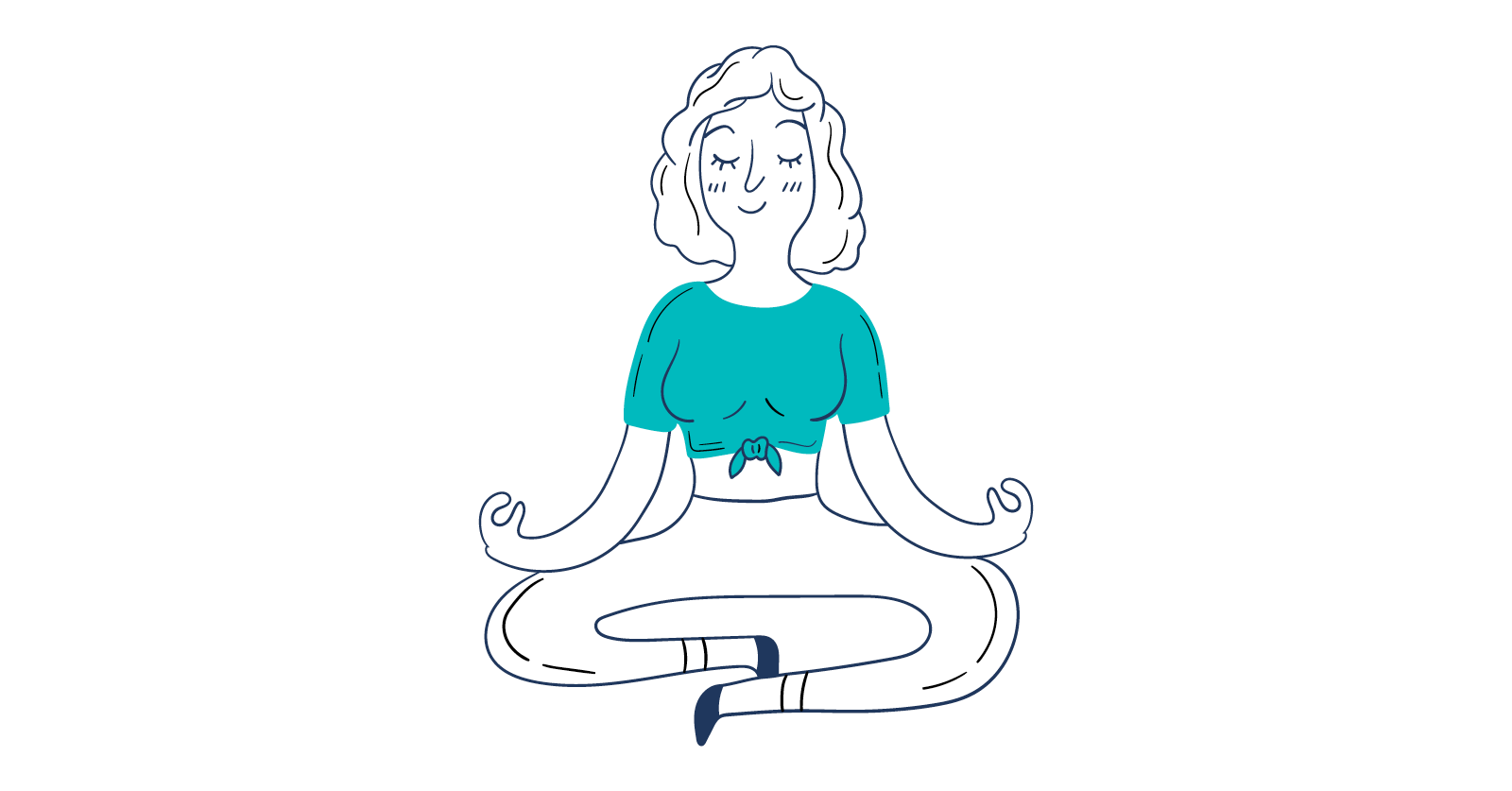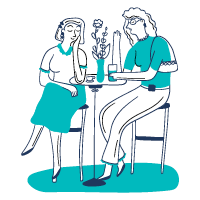Sharing is (self)caring: Fostering mental wellbeing in remote teams
Whether it’s the result of the pandemic or by personal choice, working from home has become the reality for many of us – especially over the course of the last few years. While this comes with a lot of perks, such as cutting out commuting times and having more flexible working hours, it presents challenges many of us have never had to face before. Building a close-knit team is no mean feat when working hundreds or sometimes even thousands of miles away from one another. It can be hard to open up about how you’re feeling, especially to people you don’t know as well as you would in person, and can lead to a feeling of loneliness. All of this can take a serious toll on your overall wellbeing.
Here at AJT, we know how important it is to cultivate meaningful relationships with team members. That’s why we’ve put measures in place to ensure that everyone feels part of the team, looked after, listened to, and offered help when needed. As a fairly new member of Team AJT, I’d like to share my experience of working remotely and how we foster a culture of wellbeing in our workplace. I’d love to mention what tools we use to enable us to work in a supportive and cooperative environment and how they help us thrive as a remote team.
A new (remote) beginning
Before becoming a Junior Project Manager at AJT, I was working from home as a freelance linguist and language tutor. Having spent six years prior to that walking through all sorts of weather conditions (rain, snow, hail, sun, wind and sometimes all five at once!) to get to university in time for my 9am lectures, I was looking forward to the freedom that freelance life had to offer.
Soon enough however, I started to miss having people around me to interact with and I was surprised by how much working in an isolated environment affected my mood, mental health and overall wellbeing. This was one of the reasons I decided to seek out different working opportunities and that’s when I found out about AJT. I was really impressed with their ethics and work culture so I was delighted to hear they were looking for a full-time remote Junior Project Manager. I applied and, a few weeks later, I was hired.
Starting a new job in a remote working set-up was an interesting experience; despite being used to working from home, I was surprised by how positively different working in a team environment was in comparison to my experience working for and by myself.
The first two weeks consisted mostly of training sessions with my colleagues. Not only did this allow me to learn about my role quickly and do so in a supportive environment but it also helped me to get to know the people I’d be working with and learn more about the team I had just joined.
Within the first few weeks, I had the chance to speak to all the senior management team. Anja, Mark, Nikki and Sarah all made it clear that the team’s overall wellbeing is a top priority here at AJT.
While being happy with our daily workload plays a crucial part in meeting our company goals and achieving excellent results, emphasis is placed on how our job affects us in the greater sense.
There are many ways in which we take care of each other, but at the core of what we do is the belief that fostering a culture of wellbeing is fundamental to living a happy life that goes beyond our job. This continues to be one of the highlights of working here for me.
But how do we put this into practice in our day-to-day work life?
Our tools and measures
There are many methods and tools which help us share, communicate, bond, and ultimately look after one another here at AJT. Here’s a quick glance at some of them:

The Happiness Index
The Happiness Index allows us to rate, on a scale of 1 to 10, how we’re feeling at any given moment and add a comment to explain our reasons for feeling a certain way in greater detail. We fill it in anonymously, and are encouraged to submit our answers multiple times a week. That way, as a business, we can monitor how everyone is feeling overall and pick up on any potential issues, as well as understand any general trends of mood that might be linked to what is going on in the world.

Slack
It’s hard to imagine what our day-to-day work would look like without it. Apart from using Slack to ask questions and contact linguists about jobs and deadlines, we have social channels which allow us to cultivate an office vibe even though we don’t share one in real life.
We use these channels to share book recommendations, motivate each other to be more active (thanks to our Weekly Step Challenge), chat about what we got up to at the weekend and, among other things, arrange meet-ups with our fellow colleagues.
Meet-up budget
We know how important it is for team members to spend time together in real life. For this reason, we’re given a yearly budget that we’re encouraged to fully spend on meeting up with our colleagues who we don’t get to see in the flesh every day. Selfies at the meet-ups are not strictly necessary, but highly encouraged, and so is posting them in the dedicated AJT Meet-ups Channel on Slack.
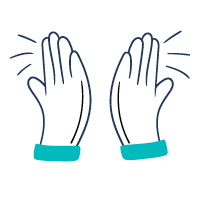
Flexibility: sharing responsibilities and moving tasks around
We have recently adopted a ‘Traffic light system’ on Slack which allows us to see who has availability to help out and who, on the other hand, has too much on their plate. This allows both project managers and in-house linguists to quickly realise who can be contacted to ask for help, and also to step in and offer help if someone needs it. This way, we can balance out the workload among every member of the team and be more productive, all the while preventing people from becoming too overwhelmed and stressed.

Co-working Zoom calls
Even though we have regular meetings each week, days can go by without us seeing or speaking to one another which is why we regularly try and organise co-working calls on Zoom. Being on a call is not only practical to ask work questions but it also allows us to bond and share little anecdotes. It really helps to bring us together despite the distance.
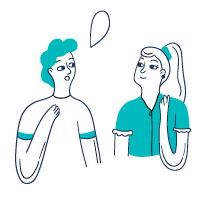
Nikki’s Open Door
Every week, our colleague Nikki holds an Open Door where people can drop in to have a chat about how they’re feeling. It’s a dedicated hour in a safe space allowing us to chat about how we’re doing, both in and outside of work, and helps AJT encourage honest and open communication. It’s an informal setting, as opposed to having to arrange a dedicated meeting slot, in the hope it will make it easier to open up about anything that’s on our mind. Nikki’s insightful and helpful advice always leaves us feeling uplifted after a chat.
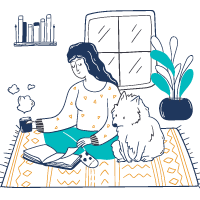
Time off
Despite our best efforts to take care of ourselves, sometimes life can be challenging and affect our work life as a result. While work might come as a welcome distraction, sometimes the best thing to do is to take some time off.
The key to success
As translators, editors, project managers and, most of all, people who share a strong passion for languages and words, we know the important role that communication plays in our everyday life, even beyond the world of translation. While these tools provide us with the practical steps and resources that we can rely upon to make sure we take care of each other, the key to taking care of ourselves is communicating honestly and openly with one another.
For this to happen it’s essential to encourage a healthy and positive culture in the workplace, something that is truly at the centre of what we do. Working every day surrounded by a group of like-minded individuals, knowing that we can rely on each other and that we’re supported in what we do, is the key to not only working well but also to having a positive impact on every aspect of our lives. And that’s something that makes me very proud to work at AJT.
